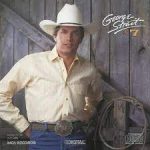Neil Diamond – “Brooklyn Roads”


“Brooklyn Roads” is a song by Neil Diamond from his 1968 album Velvet Gloves and Spit. Here’s a detailed look at the song:
Details
- Album: Velvet Gloves and Spit (1968)
- Released: 1968
- Writer: Neil Diamond
- Genre: Pop, Rock
- Length: 3:40
- Label: Uni Records
Background and Meaning
“Brooklyn Roads” is an autobiographical song where Neil Diamond reflects on his childhood and upbringing in Brooklyn, New York. The song paints a vivid picture of his experiences, memories, and the neighborhood where he grew up. It’s a nostalgic tribute to his roots and the formative years that shaped his life and career.
Musical Style
The song features:
- Vocals: Neil Diamond’s distinctive baritone voice, delivering the lyrics with emotional depth and sincerity.
- Instrumentation: A mix of pop and rock elements, with orchestral arrangements that enhance the nostalgic feel of the song. It includes piano, strings, and a steady rhythm section.
- Production: The production of the song creates a lush and layered sound, typical of the late 1960s pop music.
Notable Lyrics
Some notable lines from the song include:
- “If I close my eyes / I can almost hear my mother / Callin’, ‘Neil, go find your brother / Daddy’s home, and it’s time for supper.’”
- “I can still recall / The smell of cookin’ in the hallways / Rubbers drying in the doorways / And report cards I was always / Afraid to show.”
- “Brooklyn roads / I remember / Brooklyn roads.”
Reception
“Brooklyn Roads” was praised for its heartfelt lyrics and Neil Diamond’s introspective performance. Although it wasn’t a major commercial hit compared to some of his other songs, it remains a fan favorite for its personal and relatable storytelling.
Legacy
“Brooklyn Roads” has been appreciated over the years for its honest and vivid portrayal of Diamond’s early life. It showcases his songwriting skills and ability to connect with listeners through personal and reflective narratives. The song is often included in compilations and retrospectives of Neil Diamond’s work.











